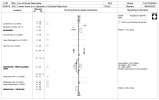Why when they aren’t responsible at an AHB?
I think that is best answered by asking why aren't drivers responsible for checking AHBs. With AHBs the signaller is provided with failure indications, and is responsible for stopping trains if the crossing fails. This requires circuits between the crossing and the signalbox, and a signal not too far from the crossing at which an approaching train can be stopped. For a level crossing in the middle of nowhere, this can cost a lot, and adds to the signallers workload.
Wth an AOCL or ABCL, the driver monitors the crossing operation through the Drivers White Light Indicator. There is no need for control and indication circuits, or a protecting signal. However, it does mean that line speeds at AOCLs and ABCLs have to be limited, so that the driver can stop the train if the DWL doesn't indicate. Having provided the DWL, with the requirement for the driver to check the DWL, then it makes sense for the driver to also check that the crossing isn't obstructed.
Whereas at AHBs, with their higher line speeds, by the time the crossing has operated, there is usually little chance of the driver stopping the train before the crossing if he sees that it is obstructed. Because of this, there are quite strict limitations on where AHBs can be used, compared to AOCLs and ABCLs. And extra safeguards against the crossing failing to operate, making AHBs more complex and expensive.
Even with their extra safeguards, AHBs are still fundamentally less safe. I think that it is intended to phase out AHBs.
There was an open crossing version of the AHB, the AOCR, but very few were ever installed before the concept was dropped through safety concerns, and I think most have now been converted to something else.


